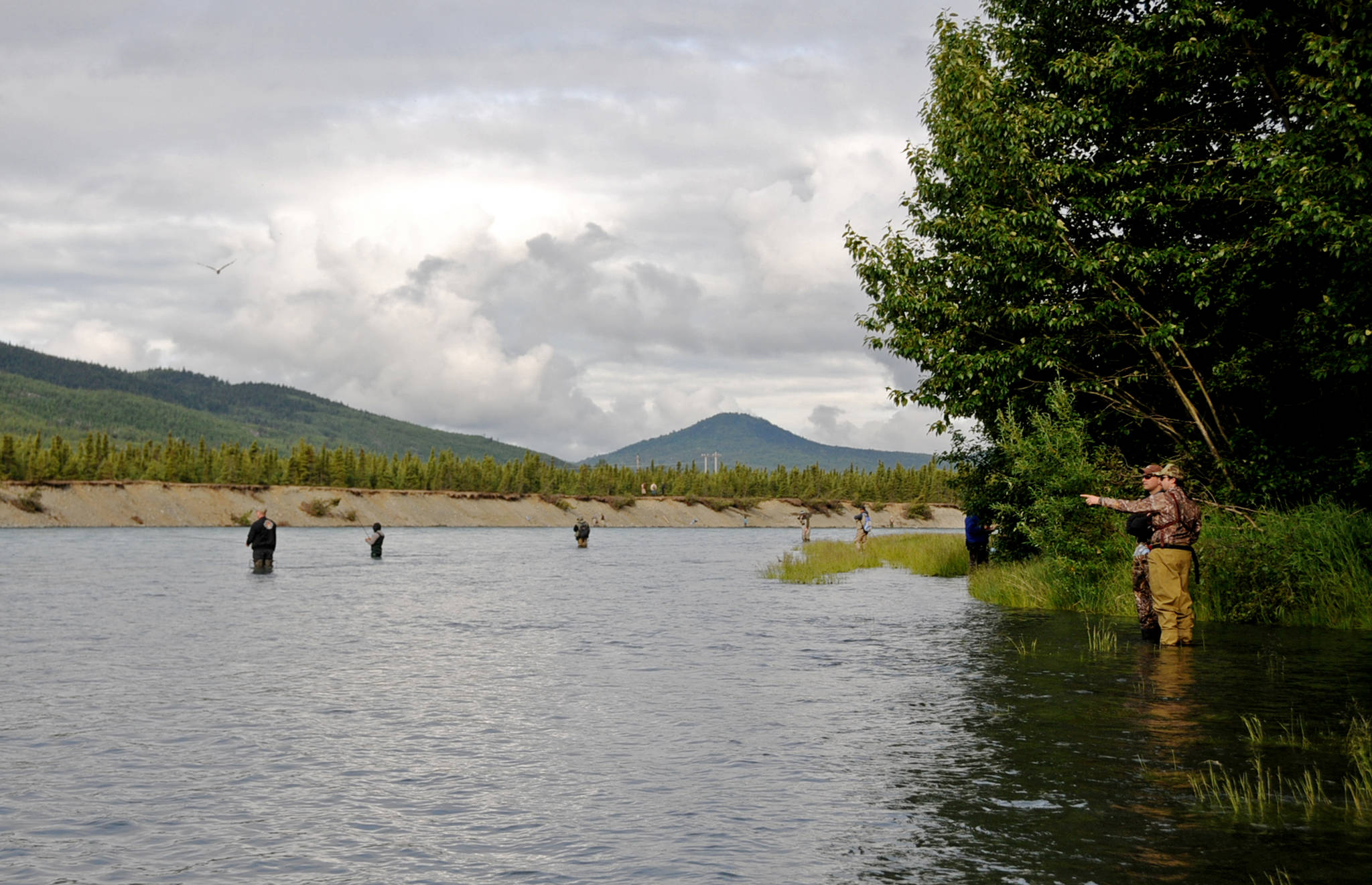Sportfishing regulations in Alaska are complicated and sometimes confuse anglers, but the Alaska Department of Fish and Game is taking steps to make them clearer.
Anglers logged about 2 million fishing days in 2015, more than half of those in Southcentral, with over 562,000 days fished on the Kenai Peninsula’s freshwater drainages. The Kenai River itself, not counting tributaries, hosted more than 425,000 days of angler effort in 2015, according to Fish and Game’s statewide sportfishing harvest survey from that year.
The Kenai River is also subject to a multitude of interlocking regulations, particularly for salmon fishing. Sportfishing anglers have to refer to the annual summary of regulations Fish and Game publishes to check what types of gear are allowed on the sections of rivers they want to fish, and if those sections are open when they want to go out.
That’s a frustration anglers have expressed and Fish and Game is planning to fix, said Ryan Ragan, the program coordinator for the Division of Sportfish in a presentation to the Board of Fisheries during its Tuesday worksession.
Fish and Game wants to streamline regulations and make them easier to understand to help anglers follow the rules, he said. To that end, the department is working on standardizing the regulation summary booklets for the state’s various regions and revising some language to make it easier to understand.
“Complex regulations can keep people from feeling comfortable while fishing, or they can prevent people from fishing altogether,” he said. “They can lead to citations. They can also increase the number of inquiries to ADFG staff, oftentimes what we see in the info center is a series of the same sort of questions coming in … and it also leads people to seek answers from fellow anglers.”
He cited the example of restrictions on the Kenai River, particularly near the Russian River, where the gear types, bag limits and dates of openings vary. Some of the comments submitted to Fish and Game with statewide harvest survey responses show frustration with not understanding how the regulations work, Ragan said.
One of the solutions Fish and Game is considering is developing a mobile application to help deliver specific regulations on smartphones, though that’s still in the works, Ragan said. There’s no specific model Alaska can follow, though
“I think what we’re seeing is more and more people are wanting to get their regulations on smart devices rather than the traditional printed (booklets),” he said.
The Board of Fisheries determines the regulations set on different state fisheries based on data gathered and recommendations made by Fish and Game biologists. Though it’s Fish and Game’s purview to design the booklets, post signs and issue emergency orders with regulation changes in season, as the final voice on regulations, the Board of Fisheries is a part of the effort to simplify sportfishing rules, Ragan said.
The board members offered some suggestions at the work session, including adding more signage and support for making the regulations booklets easier to understand. Board member Reed Morisky said he could see the value in some kind of smartphone application that would allow people to see what the regulations are where they intend to fish, or if that stream is open. There are two sides of the coin to complex regulations, he said: protecting fish stocks in smaller stream systems from too much fishing pressure on one and providing opportunity for sportfishermen on the other.
“We’ve done such a good job of telling people what they can’t do when they read through the regulations that it can be very restrictive,” he said.
The Board of Fisheries is meeting from Tuesday through Thursday in Anchorage to consider agenda change requests, non-regulatory proposals and potential meeting dates and locations for the 2019–2020 cycle regulatory meetings. On Wednesday, the board also discussed communication about the Division of Sportfish and the Division of Commercial Fisheries’ budgets for the upcoming year, which will be included in Gov. Bill Walker’s proposed budget, usually released in mid-December.
One of the items the board members asked the Division of Sportfish to consider was a sonar project to count the king salmon returning to the Kasilof River. A popular sportfishing river, Fish and Game regularly stocks kings into the river and regulates harvest there but doesn’t have an ongoing sonar project for kings the way it does on the Kenai River.
Division of Sportfish Director Tom Brookover told the board that staff in the Soldotna tested some sonar equipment for a few days this summer in the Kasilof River and “the results were good,” but a new piece of equipment would be necessary to count kings accurately in the river. After that initial investment, which Brookover estimated at between $200,000 and $250,000, the project would cost somewhere between $30,000 and $50,000 annually to run, he said.
“It appears doable for chinook, for kings over a certain length limit,” he said.
At the same time, Fish and Game is considering eliminating some king salmon research projects because funds available through the Chinook Salmon Research Initiative are expiring, Brookover said.
Reach Elizabeth Earl at elizabeth.earl@peninsulaclarion.com.

